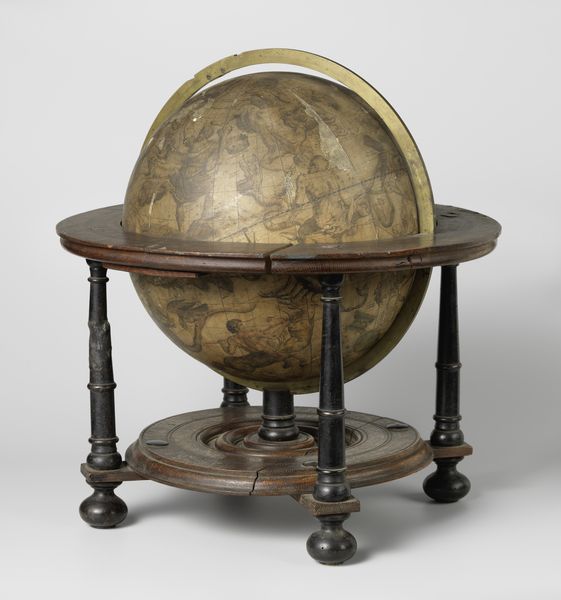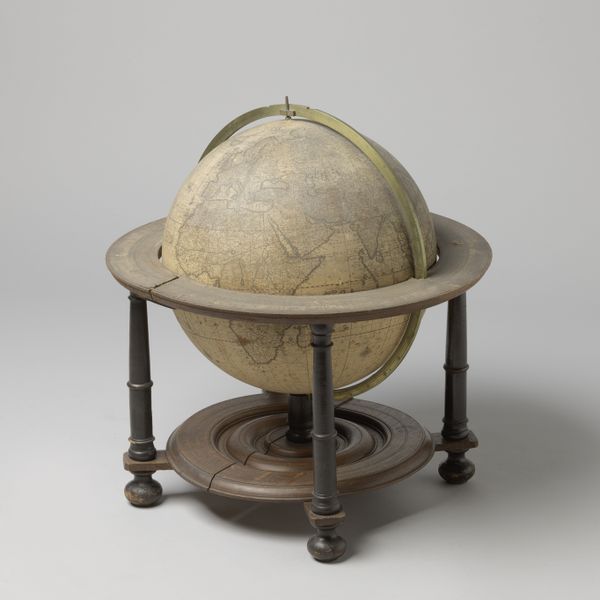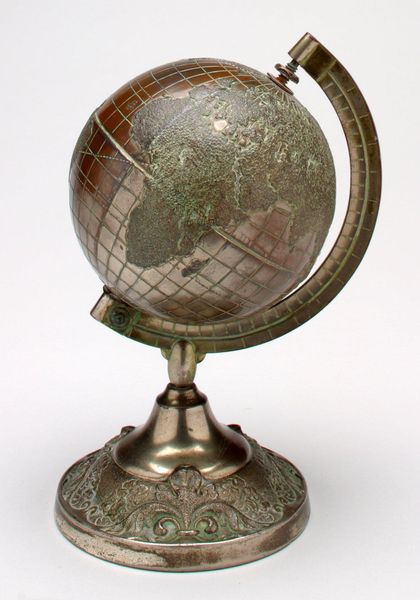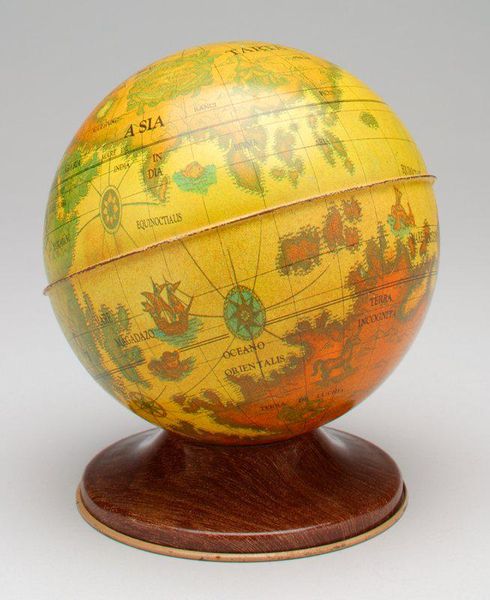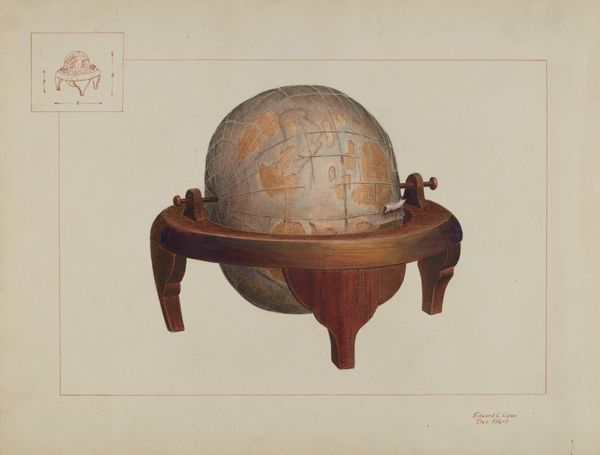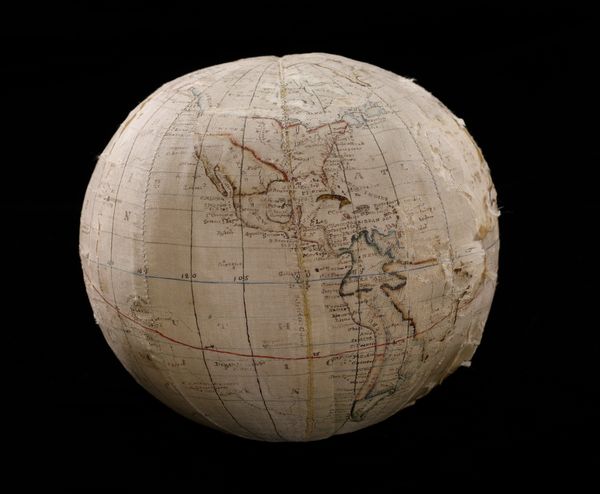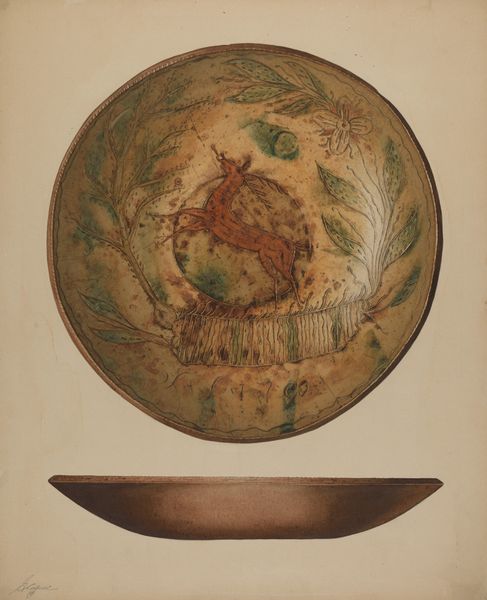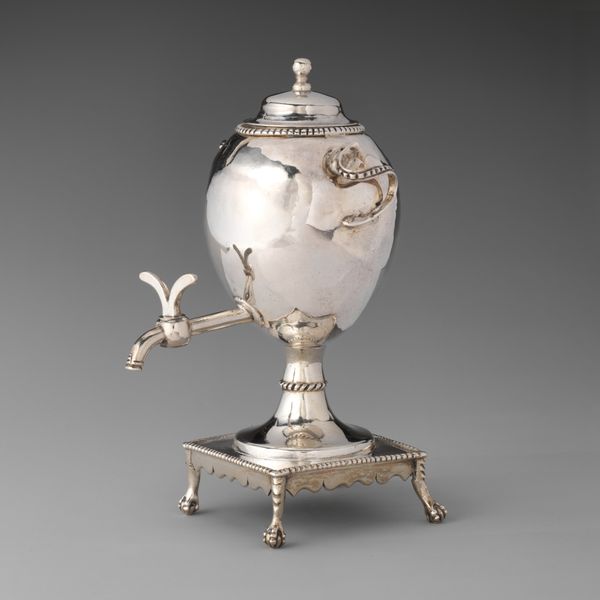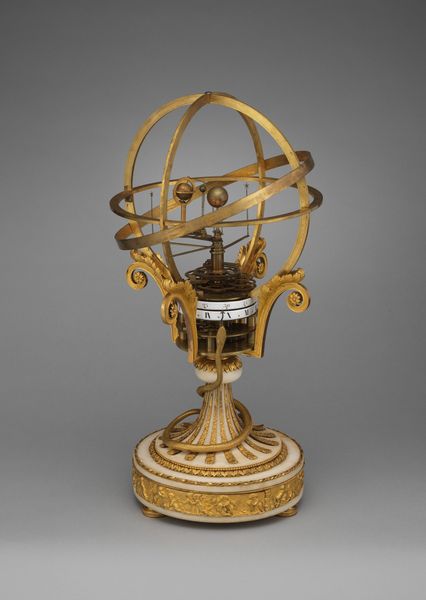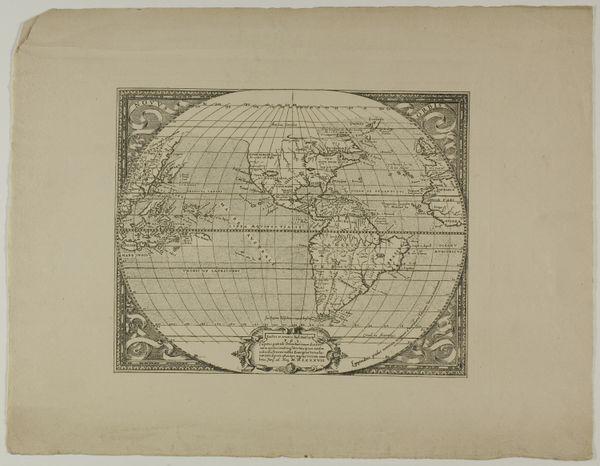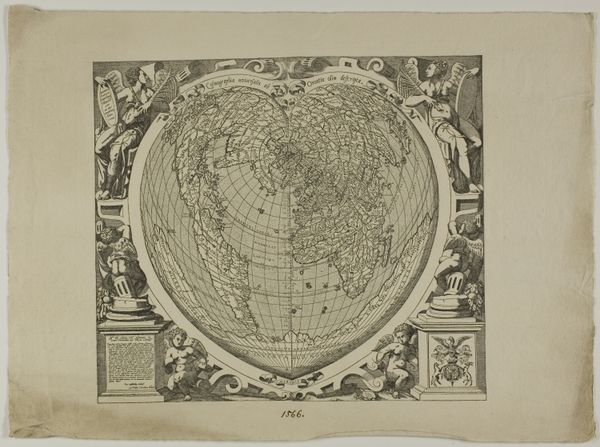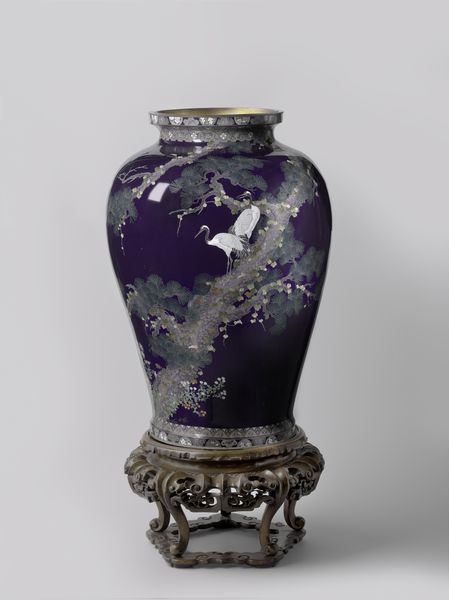
metal, sculpture, wood
#
baroque
#
metal
#
sculpture
#
wood
#
islamic-art
#
decorative-art
Dimensions: Overall: 20 1/2 × 18 5/8 in. (52.1 × 47.3 cm); Diameter (globe): 13 3/8 in. (34 cm)
Copyright: Public Domain
Curator: This celestial globe, crafted between 1621 and 1699 by Willem Jansz Blaeu, offers a fascinating glimpse into early modern astronomy and cartography. It is currently housed at the Metropolitan Museum of Art. Editor: It’s captivating! The constellation depictions are so vibrant; the artist utilized an array of pigments and skilled draftsmanship. It looks meticulously crafted. Curator: Indeed. Blaeu was a master cartographer, and his globes were highly sought after. It reflects a pivotal time of exploration and the expansion of European knowledge. Considering it is a decorative art piece, the accuracy in portraying the known celestial bodies is noteworthy. Editor: I wonder about the construction; what is it actually made of? It appears to have a wooden armature covered in meticulously painted paper gores. We must not disregard the process and labor involved to fabricate this object, and to portray such rich imageries on it. Curator: Absolutely. The globe represents not just scientific pursuit but also political ambition. Maps were tools of power, staking claims and legitimizing colonial endeavors. The intersection of science, art, and socio-political climate are so evident! Editor: When we look closely at the constellations’ artwork, the human figures and mythical creatures point us towards a cultural consumption far exceeding functional demands, as they reflect societal ideals and visual culture from that specific time period. Curator: And let's not forget its patronage. Globes like these were status symbols, commissioned by wealthy individuals to showcase their erudition. The museum plays a crucial role in conserving objects such as this and placing it within broader conversations regarding its cultural value. Editor: Reflecting on the making of this piece, I see such dedication, that reminds us about craft production beyond aesthetics: time, skilled labour and intention are the foundation of artistic work. Curator: Indeed, it's a complex artifact. Considering its context, craftsmanship and social function gives us a more nuanced reading. Editor: It’s more than a beautiful object. It’s a document, a piece of history, embedded with a lot of meaning.
Comments
No comments
Be the first to comment and join the conversation on the ultimate creative platform.
